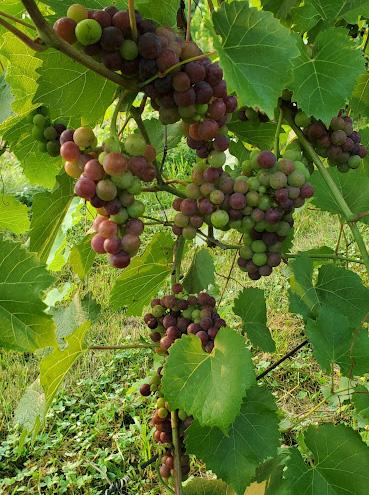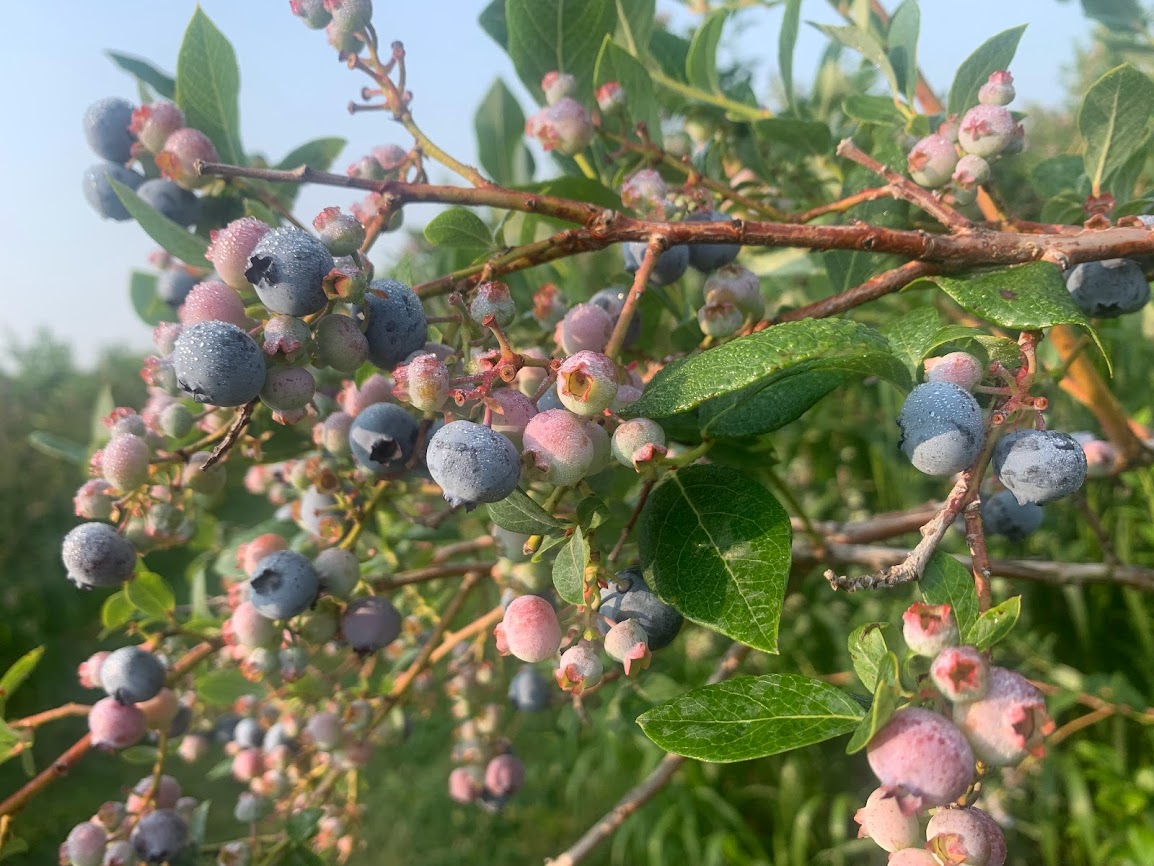Southwest Michigan fruit update – July 25, 2023
Insects and diseases are active in area fruit crops.

Weather
Last week had relatively mild temperatures with minimum and maximum temperatures ranging from the mid-60s to the upper 70s/lower 80s. Generally dry conditions prevailed for the week, with rain on Sunday, July 23, for some locations.
Over the past week, we collected 546 growing degree days (GDD) base 42 and 386 GDD base 50, respectively. We are somewhat below the long-term seasonal average for heat unit accumulation.
|
Southwest Michigan GDD summary from March 1 – July 24, 2023 |
|||
|---|---|---|---|
|
Station |
GDD 42 F |
GDD 45 F |
GDD 50 F |
|
Benton Harbor (SWMREC) |
2296 |
1977 |
1499 |
|
Lawton (Lawton) |
2301 |
1983 |
1504 |
|
Fennville (TNRC) |
2109 |
1802 |
1345 |
|
Average for the SW region |
2237 |
1923 |
1454 |
|
Average last week |
1691 |
1437 |
1068 |
With the high temperatures forecasted for the rest of the week, we can expect our degree day accumulations to come back up to our long term normal. Forecasted rain plus heat for the coming week will encourage various diseases, especially fruit rots.
Tree fruit
San Jose scale male catch numbers have increased 10-fold over the last week in the Trevor Nichols Research Center trap line. The tiny yellow crawlers can be seen on fruit surfaces. Oriental fruit moth trap catches have been strong for four weeks at the Trevor Nichols Research Center. Catch of Japanese beetle in the Trevor Nichols Research Center trap line has increased over the last four weeks. Catches of spotted wing Drosophila numbers of larvae are becoming more common in overripe cherries and blueberries. Spotted wing Drosophila larvae are very prevalent in wild fruit such as honeysuckle.
Apple insects of concern are Japanese beetles, oriental fruit moth, codling moth and San Jose scale. Red marks on fruit due to first generation San Jose scale are being seen. Woolly apple aphid colonies are becoming common on limbs in some orchards. Apple maggot trap catches at the Trevor Nichols Research Center continue to increase for the third week. Diseases of concern are sooty blotch and flyspeck, and possibly the summer rots—bitter rot, black rot and white rot.
Peach harvests of Garnet Beauty, Summer Serenade and Glenglo are underway, with some early harvests of Redhaven in a few sites. Rains over the last few weeks resulted in cracking of some nectarine varieties. Split pits are common in some varieties with light crops. Protection against the second generation of oriental fruit moth is needed now. Bacterial spot symptoms on leaves have increased over the past week.
Cherry yellow leaves due to cherry leaf spot have increased markedly in area tart cherry orchards.
Plum harvest of Methley, Shiro plum and Vibrant have started in some area orchards. Black knot from last years infection should be pruned out as soon as practical. Susceptibility to new infection decreases when new terminal growth ceases. Brown rot and codling moth are the major management concerns.
Small fruit
Most grape varieties of grapes are at berry touch to bunch closure. Marquis and other early hybrid grapes are starting veraison. Leaf pulling, shoot thinning and hedging is well underway for area grapes. Leaf pulling removes the leaves around the clusters to promote better air flow for disease management. Shoot thinning is the removal of excess shoots to help with airflow and reduce overall crop load. Hedging is done to help manage vigor and to promote new leaf growth, which is important for producing good nutrient transfer to the developing grapes later in the season.
Japanese beetle numbers have increased significantly over the past few weeks in grapes and other crops, with most damage is being seen in minimally sprayed blocks.
We are in the middle of the second generation of grape berry moth flight. Biofix, approximately July 3-4, is generally accepted timing for insecticides Intrepid, Altacor and Verdepryn, all with ovicidal activity. Products with larvicidal activity are generally applied 100 GDD base 47 later, which was approximately July 7 this year. Berry moth trap catches have been moderate so far this year.
Black rot and downy mildew management is still a concern in some grape clusters mainly as a result of infections from the last couple of weeks. Now is when developing fruit start developing resistance to many of the spring diseases. Upcoming heat and humidity will increase concerns about powdery mildew. Treatments for black rot should end soon. Protections against cluster rots like botrytis bunch rot should continue until bunch closure.
For vinifera grapes, fruit infections from all the major diseases should be managed, especially around rain events, for at least the next couple of weeks until the fruit become resistant.

Blueberry harvest is in full swing. Disease control focuses on protecting fruit from anthracnose and alternaria. Protecting green fruit is easier than stopping infections on blue ripening fruit.
Spotted wing Drosophila numbers are increasing. Growers should trap for spotted wing Drosophila. Spotted wing Drosophila is expected to be delayed this year due to the hot, dry weather, but scouting is still recommended in crops as they reach susceptible stages. Reports of light catches have started coming in so large increases are expected in the second half of July.

Brambles: Raspberry harvest continues. Summer red raspberry harvest is tapering off. Blackberry harvest underway. Bloom has begun on the primocanes in some early fall bearing varieties.
Announcements
If you’d like more blueberry information in your inbox, sign up for Blueberry Bites! New this year, Blueberry Bites is a blueberry-focused, bite-sized, weekly update from the blueberry team at MSU. A total of 4 RUP credits have just been approved for this event.
On Wednesday, Sept. 6, 2023, the Michigan State University Extension blueberry team will host their second annual Blueberry Field Day at the Trevor Nichol’s Research Center in Fennville, Michigan, from 10:30 a.m. to 3 p.m. The event is free for attendees and includes lunch and light refreshments. This event will be packed with hands-on educational content focused on commercial blueberry producers. Presentations by experts from the Michigan State University campus and around the state will join us to share their knowledge and what they have been working on for the past few seasons. Sign up here. Four RUP credits will be offered.
This work is supported by the Crop Protection and Pest Management Program [grant no 2021-70006-35450] from the USDA National Institute of Food and Agriculture. Any opinions, findings, conclusions, or recommendations expressed in this publication are those of the author(s) and do not necessarily reflect the view of the U.S. Department of Agriculture.



 Print
Print Email
Email
